Ultrahuman Ring Air review: who needs a display, anyway?
Ultrahuman's Ring Air is currently the lightest smart ring on the market, tracks tons of health data and offers plenty of insights
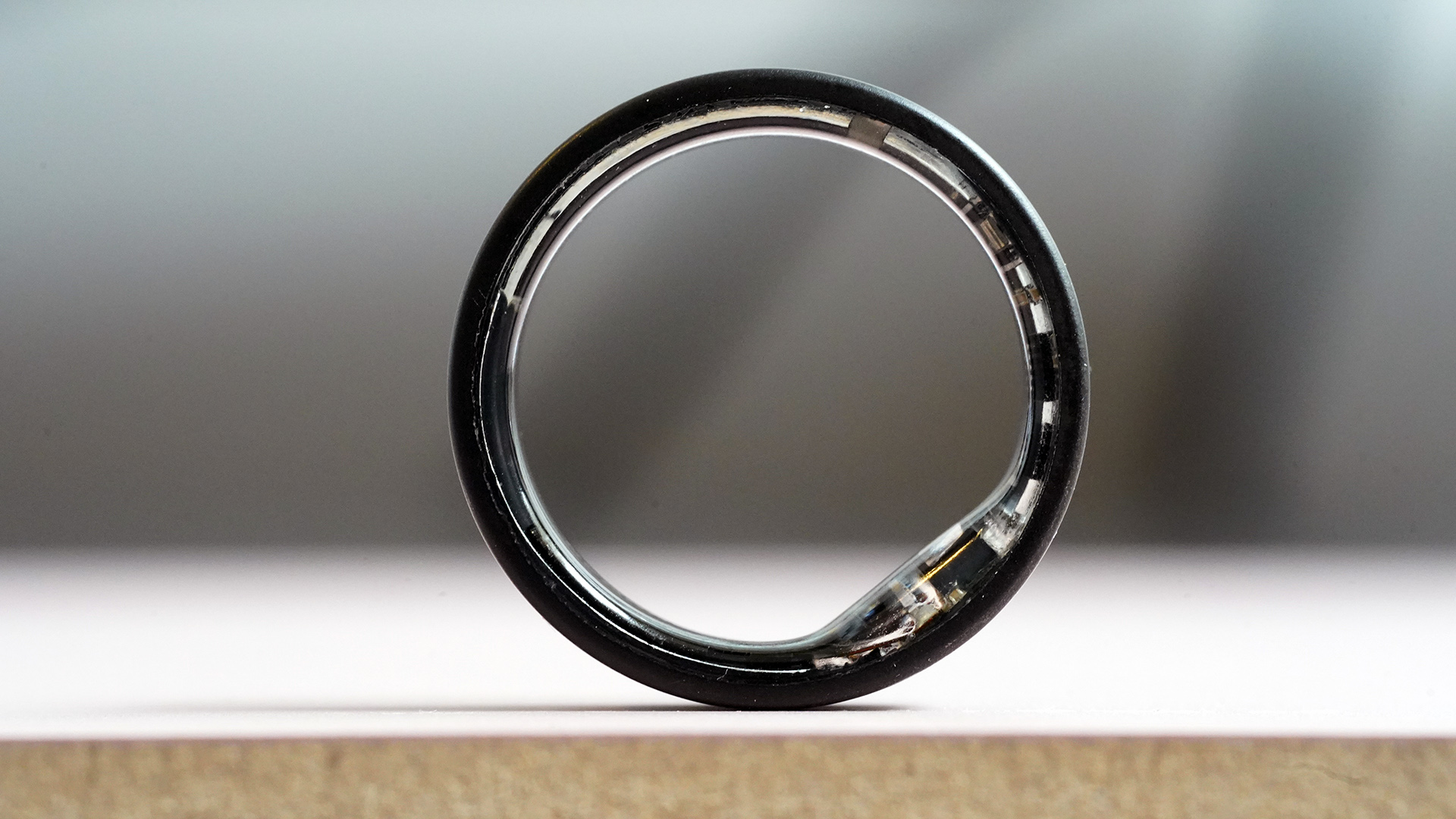
If you're more interested in keeping a keen eye on your sleep trend and gradual health improvements, you should check out the Ultrahuman Ring Air. Sure, there is an initial cost to buy the ring, but thanks to the lack of subscription fees, you'll be able to access any and all future software upgrades, improved features, and new modes – for free.
-
+
Offers a convenient way to track your health
-
+
Lightweight and comfortable to wear
-
+
Tons of recommendations and trends via the Ultrahuman app
-
+
One-off cost (no subscription fee)
-
+
Fitness and mindfulness workouts available in the app
-
-
Outer paint can get damaged easily
-
-
Fitness tracking is so-so
Why you can trust T3

Ultrahuman Ring Air review: an excellent smart ring that helps you understand long-term health trends without the distraction that inevitably arises when using smartwatches for the same purpose. Fitness tracking could be better, and the hardware a bit more durable, but overall, Ultrahuman Ring Air is an excellent effort that might please those who can't be bothered to use wrist wearables.
Ultrahuman is a relatively new name in the weird world of wearables. Its first product was a CGM (continuous glucose monitor), similar to Levels, but seeing the success of the Oura ring and the likes, Ultrahuman made the (right) decision to design a wearable that's less intrusive than a CGM.
But instead of just ripping off smart rings already available on the market, Ultrahuman went further by creating a notch-less, super light ring capable of not only collecting data but also providing some unique health insights I haven't seen elsewhere, like the Stimulant Permissible Window, which I'll explain in more detail below.
The Ultrahuman Ring Air certainly belongs on T3's best fitness tracker roundup, and based on its slumber-monitoring prowess, I think we might even have to include it in our best sleep tracker guide. Should you get one? Read my full Ultrahuman Ring Air review below to find out.
[First reviewed Sept 2023]
Ultrahuman Ring Air review
Ultrahuman Ring Air review: price and availability
The Ultrahuman Ring Air was launched in June 2023 and is available to buy now directly from Ultrahuman for a recommended retail price of $349 (approx. £279/ AU$ 542). It comes in four colours: Aster Black, Matte Black, Bionic Gold and Space Silver. The size range is between 6-12, and you can order a ring sizer kit if you're unsure which one to get. Ultrahuman also provides an e-sizing service that measures your fingers using the camera on your smartphone, which is probably more environmentally friendly than getting the sizing kit.
Ultrahuman Ring Air review: specifications
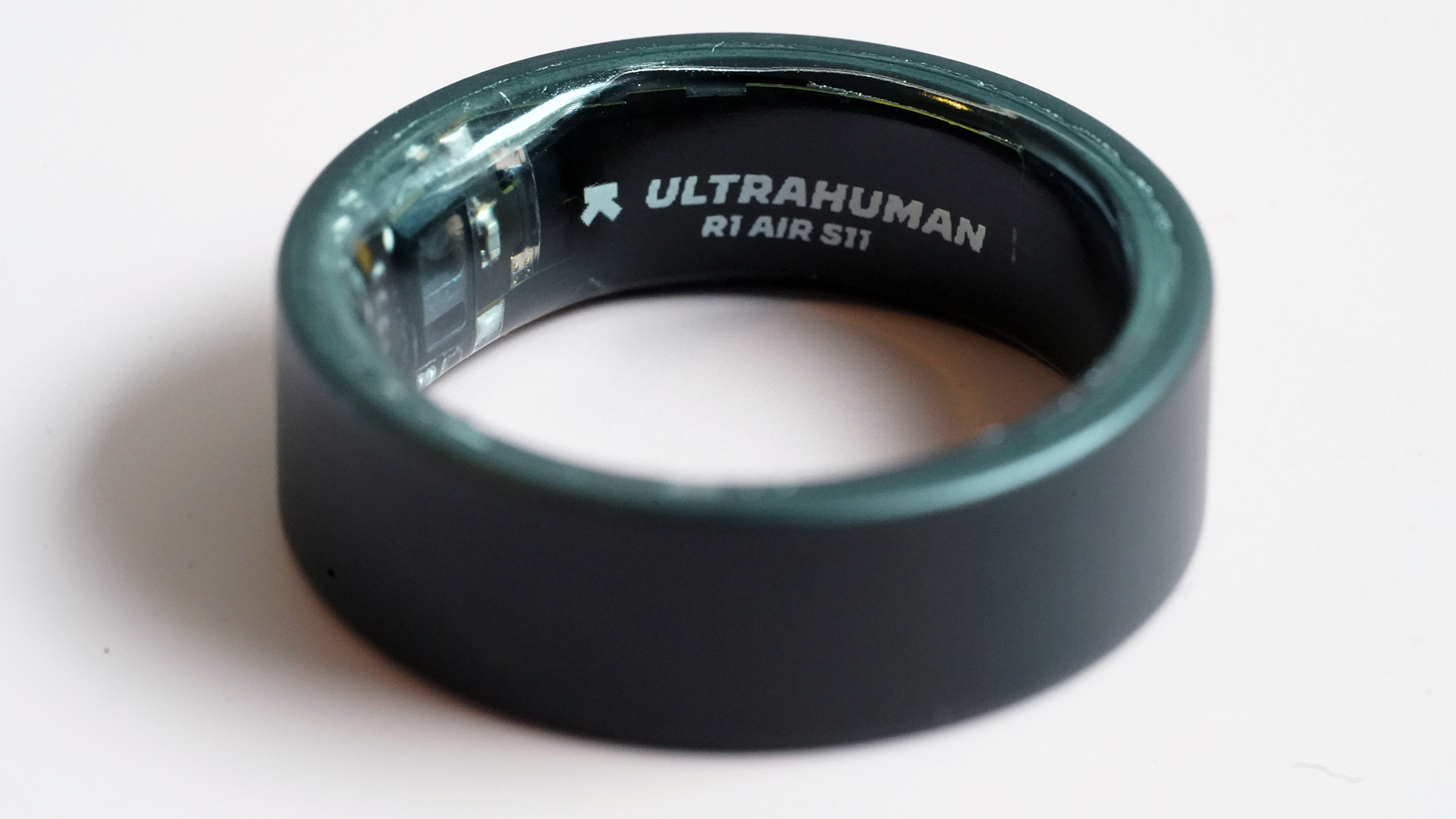
- Width: 8.1mm
- Thickness: 2.45 - 2.8 mm (varies with size)
- Weight: 2.4 - 3.6 g (varies with size)
- Material: "fighter jet grade" Titanium reinforced with Tungsten Carbide Carbon coating (outer shell); medical-grade hypoallergenic epoxy resin (inner shell)
- Connectivity: Bluetooth Low Energy (BLE5)
- Battery life: up to 6 days
- Charging time: 1.5 - 2 hours from 0% to 100%
- Water rating: water-resistant up to 100 meters
Ultrahuman Ring Air review: design and build quality
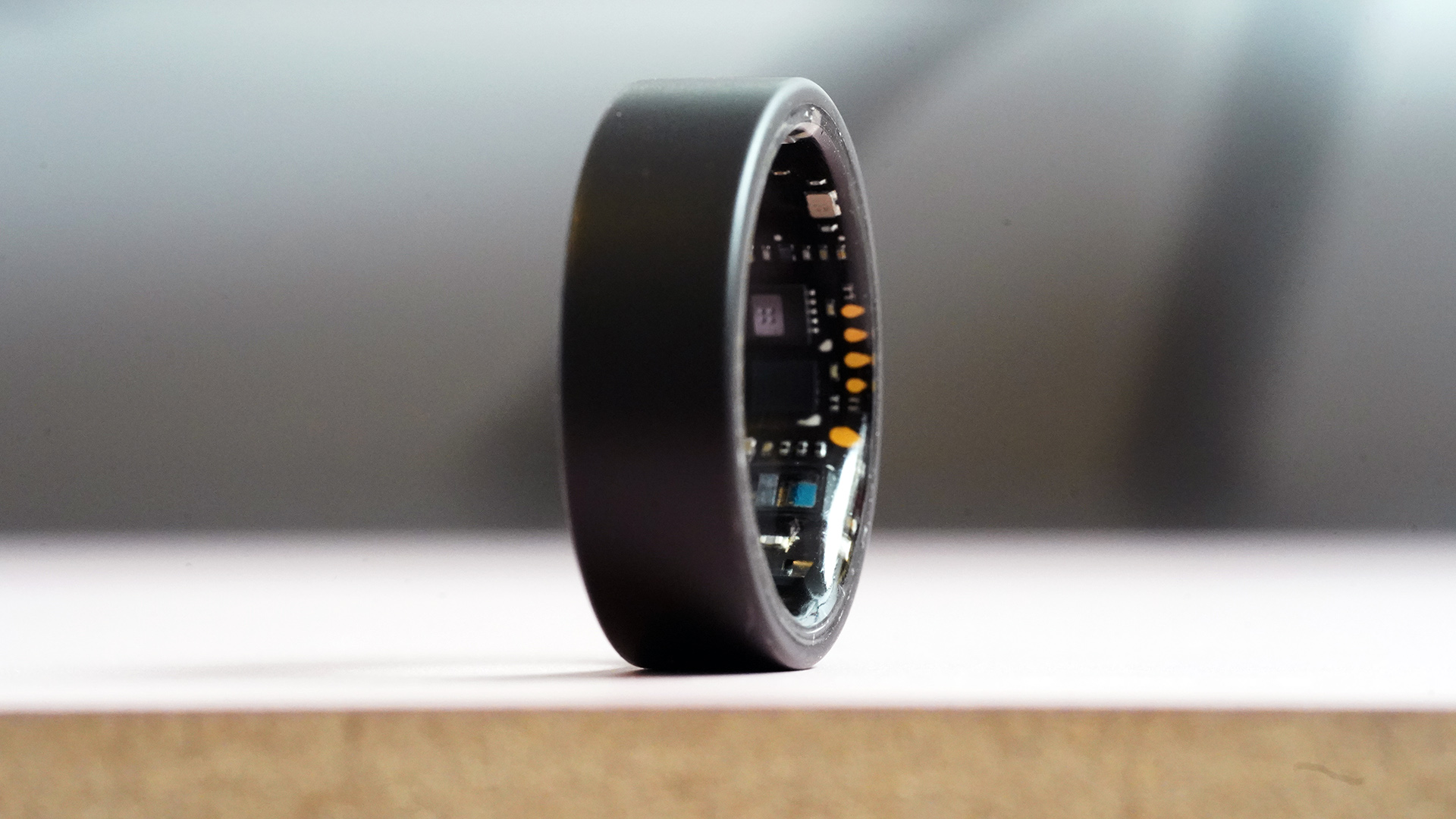
One of the main USPs of the Ultrahuman Ring Air is its design. The brand claims the Ring Air is the lightest smart ring on the market, weighing only 2.4 grams (the smallest, size 6 version). To put this in perspective, the Oura Ring Gen3, arguably the most popular smart ring on the market, weighs 4 grams, so almost twice as much.
To achieve this, Ultrahuman used materials such as 'fighter jet-grade' titanium and 'medical-grade' hypoallergenic epoxy resin for the construction of the Ring Air. The improve the durability of the product, the outer shell has been reinforced with a Tungsten Carbide Carbon coating.
Ultrahuman didn't skimp on sensors, either. Under the smooth, notch-less casing, you'll find an Infrared Photoplethysmography (PPG) sensor, a non-contact medical-grade skin temperature sensor, and 6-axis motion sensors, allowing the ring to collect a number of health data, including heart rate, oxygen saturation, and more.
A post shared by Matt Kollat (@pace_max_pro)
A photo posted by on
The Ultrahuman Ring Air feels solid despite its lightweight construction. It helps that the wearable is water-rated up to 100 metres, so you don't have to take it off when you go swimming or do the washing up. However, I found the tungsten cover is prone to scratching, which is more of a cosmetic rather than a structural issue but worth mentioning.
Another thing I noticed is that I prefer to wear the Ultrahuman Ring Air on my non-dominant hand. Smart rings are less cumbersome to wear compared to smartwatches and running watches, but it's true that we use our hands more for daily tasks than our wrists. I often did not grip objects properly with the Ultrahuman Ring Air on my index finger to avoid damaging it. This resulted in tricky situations when I tried to lift a bike over a gate.
Ultrahuman Ring Air review: features
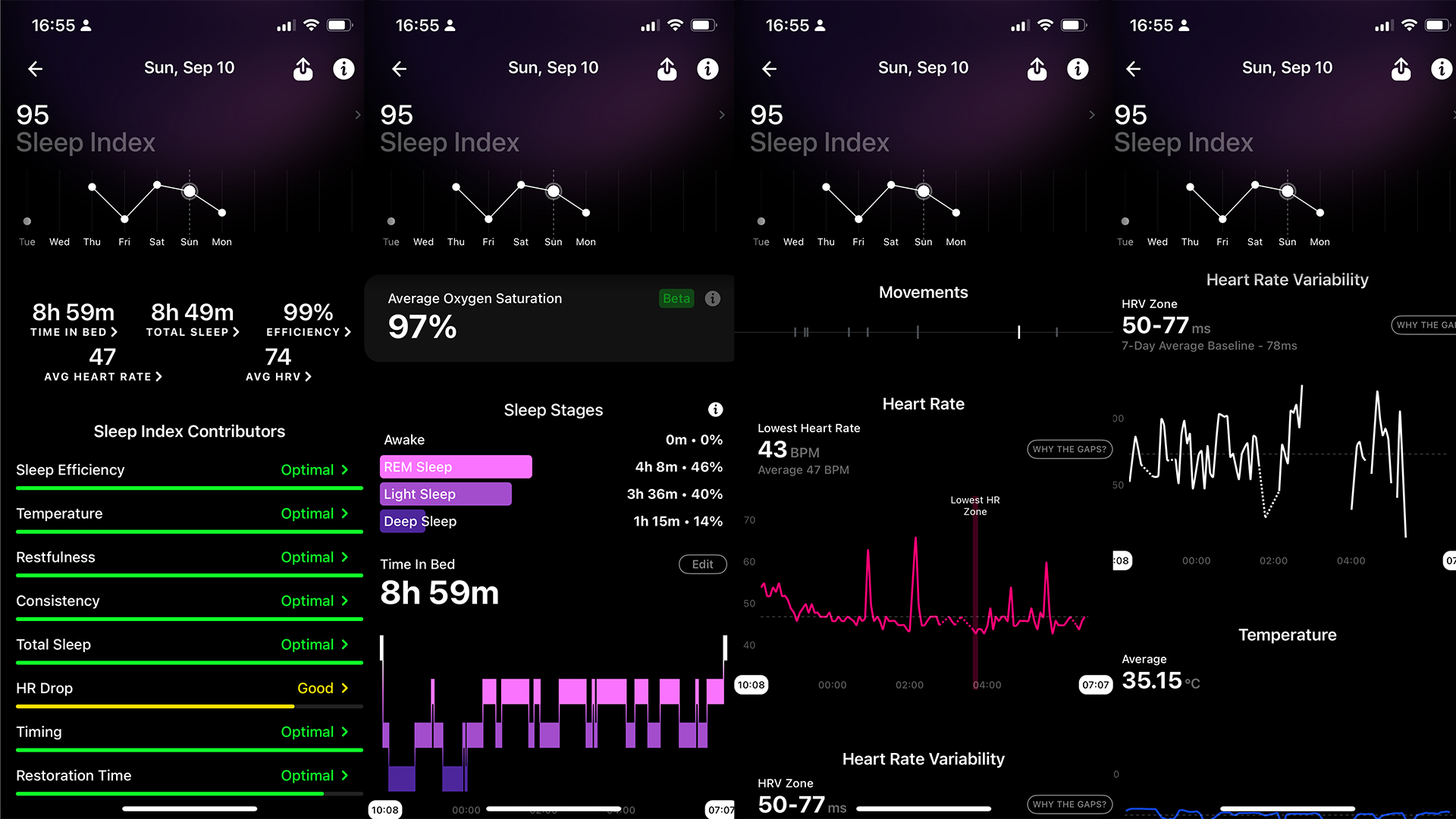
Using clever algorithms, the Ultrahuman Ring Air can provide daily, weekly and monthly views of your main health stats. It predominantly focuses on health and recovery as opposed to fitness.
Sleep is probably the most significant part of Ultrahuman's offering. It offers an insight called Circadian Phase Alignment, which suggests time windows – 'phases' – throughout the day for certain activities based on the 'sleep temperature minima' (I assume this is minimal body temperature during the night). Using the prompts in the app, you can optimise your daily activities to ensure your circadian rhythm stays undisturbed.
Of course, the Ultrahuman Ring Air also monitors and rates your slumber based on eight different metrics. You can also compare these to previous nights' data, although the app does the work for you and compares any night's sleep stats with your average score to give you an approximate idea of your sleep efficiency.
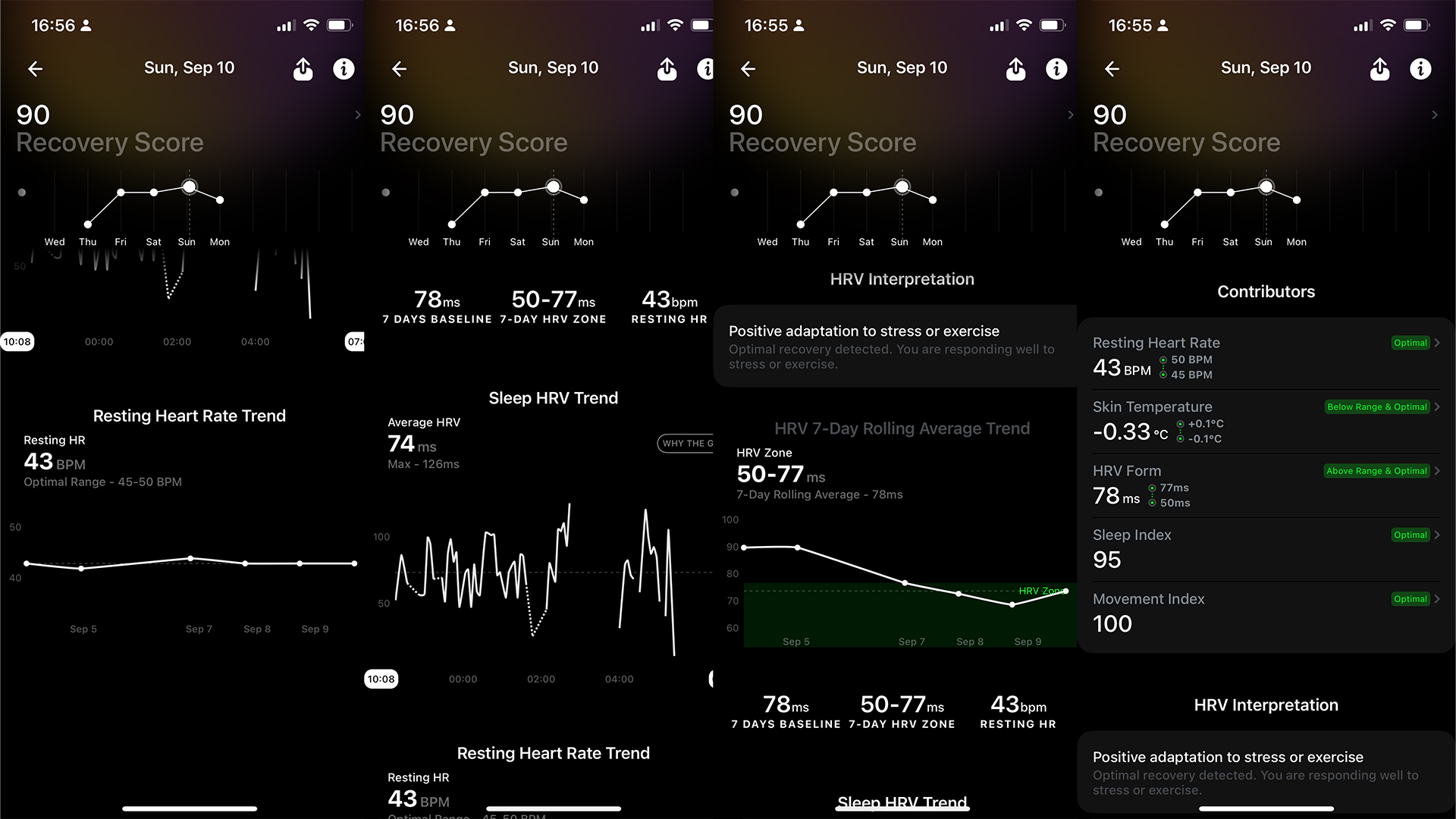
Recovery is also an essential part of the Ultrahuman experience. Your recovery score is a blend of key metrics, including heart rate variability, heart rate, and skin temperature. Stress also plays a significant role, as does your Movement Index, which is based on metabolic equivalent (METs) and depends on how much you move throughout the day.
To help you move more and stress less, Ultrahuman offers an extensive library of meditation and breathing exercises and workouts. Similarly to other wearable companies, most notably Fitbit and its Fitbit Premium, Ultrahuman's content library is a good source for complete beginners. Better still, it comes at no extra cost, unlike Fitbit's offering.
One of my favourite features was the Stimulant Window Recommendations. This is also based on sleep/circadian rhythm and provides personalised recommendations based on your responses to stimulants (e.g. coffee), which might help you determine the ideal timing and dosage for enhanced performance. You can (and should) log your daily stimulant intake to help the algo fine-tune its recommendations.
Ultrahuman says there are tons more features coming to Ring Air in the near future, including workout mode, respiratory rate tracking, cardiovascular fitness estimation, Apple HealthKit Update and more.
Ultrahuman Ring Air review: health and fitness tracking
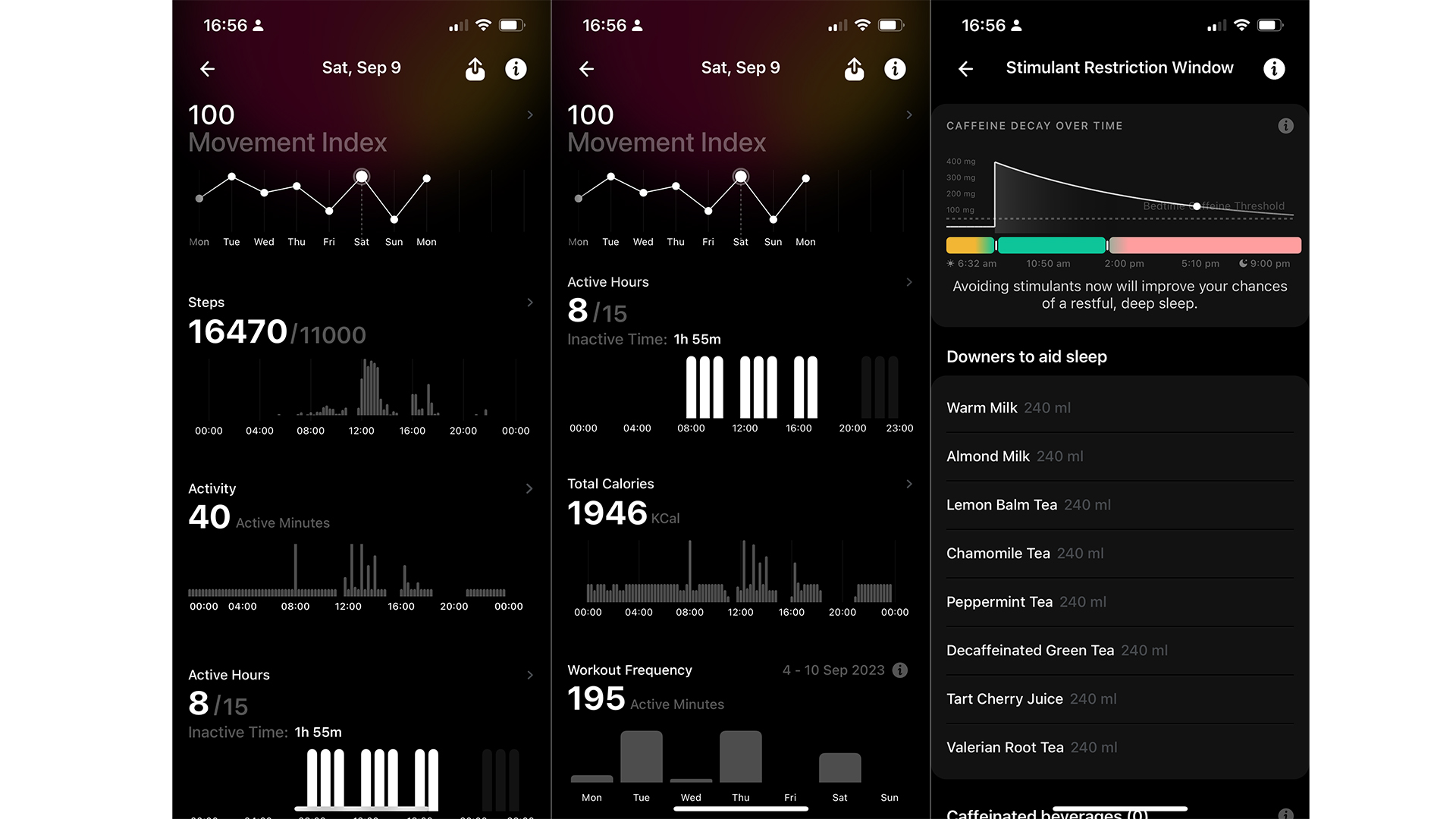
I found the Ultrahuman Ring Air a reliable health-tracking companion. Like most fitness trackers, it's best kept as a passive tracker, which makes sense as you can only interact with the ring via the app. Having to get your phone out of your pocket and opening the app is admittedly one step more than scrolling through data on the screen of your smartwatch.
The display-free wearable experience offers a number of benefits, the most prominent being the lack of distractions. Smartwatches often prevent you from staying in the zone by sending you notifications, but you can count on the Ultrahuman Ring Air not drawing your attention away from any task.
The accuracy of the data collected by the Ultrahuman Ring Air is hard to verify, as I can only compare the stats to other wearables, most of which collect health data on my wrist and therefore aren't accurate either. From what I can tell, none of the stats provided by the Ring Air are widely inaccurate, and they also seem consistent, which is more important.
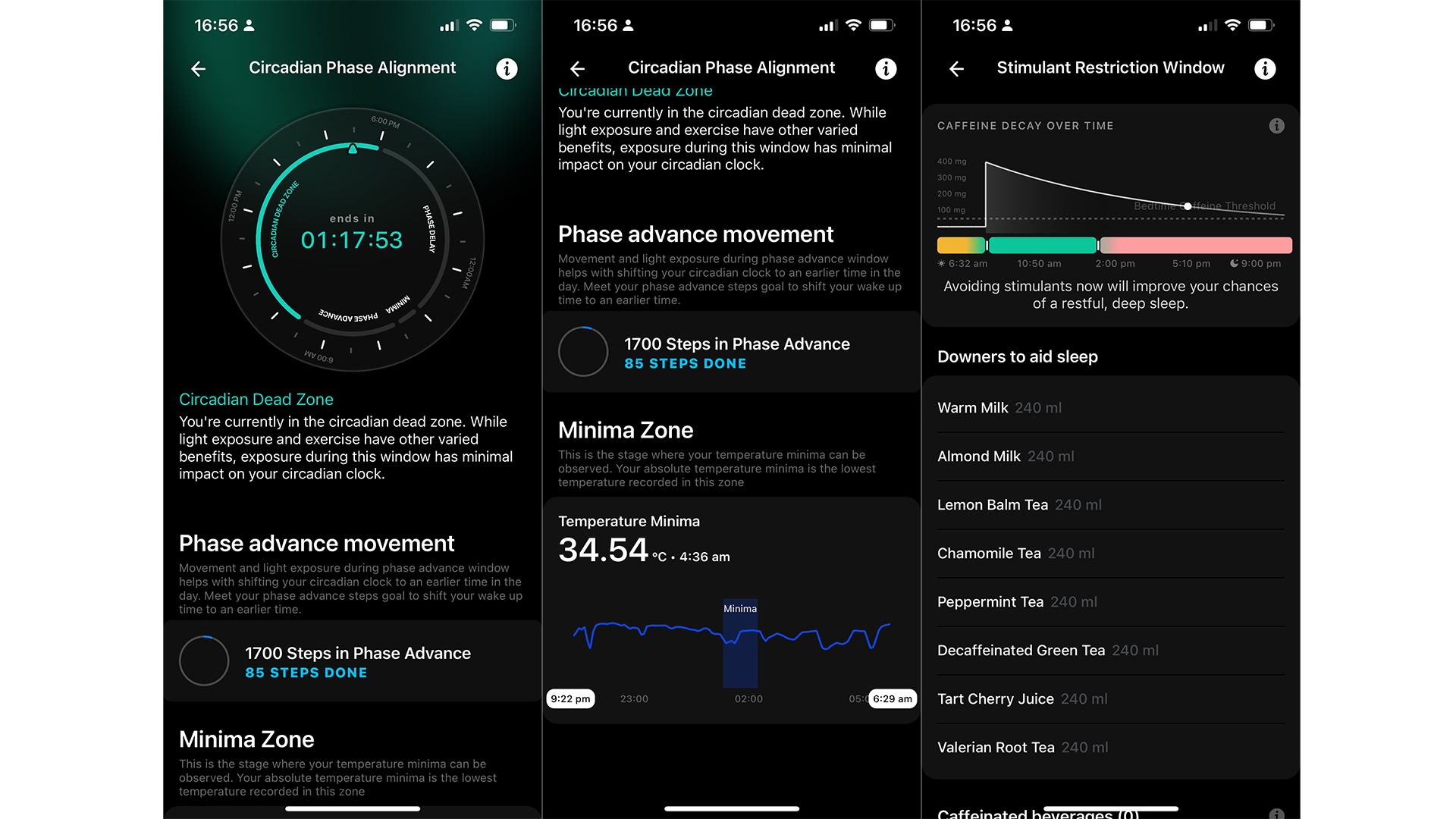
What's more important are the health suggestions, of which there are many. I found the stimulant window suggestions helpful – although I often disregarded them in the morning. Circadian Phase Alignment is also interesting, even though I already did most of the recommended actions before I started using the ring/app (e.g. going for a walk in the morning, avoiding coffee in the afternoon, etc.).
Workout tracking is a bit clunky. One particularly strenuous running session was automatically recorded by the Ultrahuman Ring Air, saying my average heart rate was something like 78 bpm, which, let me tell you, wasn't the case. I wasn't too bothered by this, as I never intended to use the smart ring as my primary performance fitness wearable.
One area where the Ultrahuman ecosystem could improve is recommending content from its library based on your behaviour. You can manually browse and select workouts from the app's library, but these aren't personalised. I can envision a system where the app would suggest activities based on your recovery and sleep, as well as your circadian phase, movement index, etc.
Ultrahuman Ring Air review: verdict
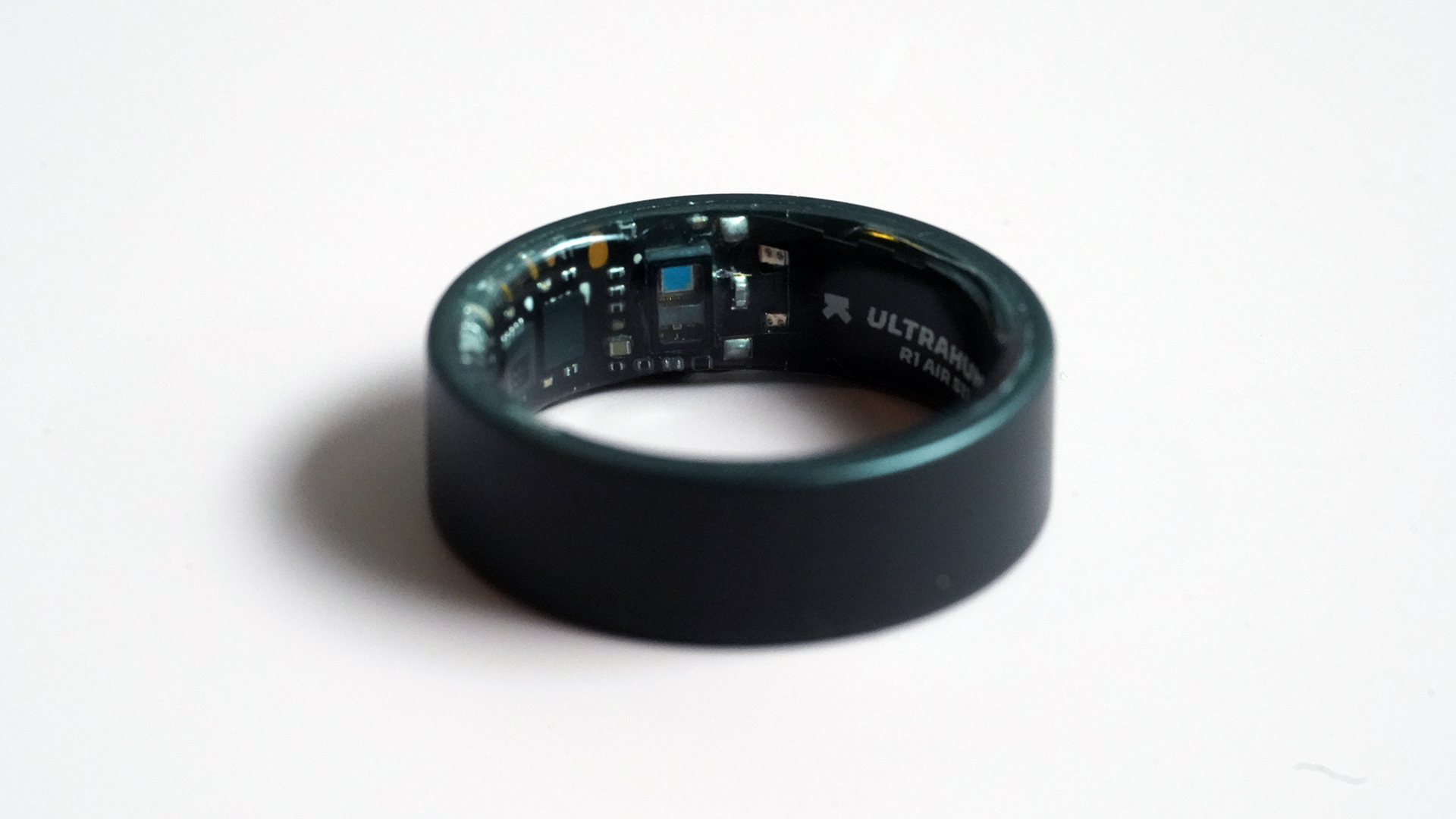
The Ultrahuman Ring Air is a unique fitness wearable concept, and not just because of its lightweight, compact design, which admittedly helps people get less annoyed with it over time. Through the accompanying app, this smart ring can help you optimise your daily activities and – maybe – improve your health, as long as you are happy to adhere to the algorithm's recommendations.
Thanks to the unique metrics and suggestions, the Ultrahuman Ring Air is the best smart ring for sleep tracking. Not only does it monitor your circadian rhythm, but it also suggests a daily window in which you should consume all your stimulants (e.g. tea, coffee) so as not to disturb your sleep.
If you're more interested in keeping a keen eye on your sleep trend and gradual health improvements, you should check out the Ultrahuman Ring Air. Sure, there is an initial cost to buy the ring, but thanks to the lack of subscription fees, you'll be able to access any and all future software upgrades – for free.
Ultrahuman Ring Air review: also consider
The Ringconn Smart Ring is an ideal wearable for those interested in keeping track of their key vital stats, sleep and stress. Its no-frills approach might appeal to those who find advanced health metrics and suggestions overwhelming. However, it shouldn't be your first choice if you're keen on tracking specific fitness activities. Read my full RingConn Smart Ring review.
If you're into fitness tracking and would rather pay a monthly fee instead of a one-off cost, Whoop's ecosystem is your best option. Whoop's primary focus is physical, mental and emotional strain and recovery. And similarly to Ultrahuman, the Whoop strap has no screen! Read my full Whoop review.
Sign up to the T3 newsletter for smarter living straight to your inbox
Get all the latest news, reviews, deals and buying guides on gorgeous tech, home and active products from the T3 experts

Matt Kollat is a journalist and content creator who works for T3.com and its magazine counterpart as an Active Editor. His areas of expertise include wearables, drones, fitness equipment, nutrition and outdoor gear. He joined T3 in 2019. His byline appears in several publications, including Techradar and Fit&Well, and more. Matt also collaborated with other content creators (e.g. Garage Gym Reviews) and judged many awards, such as the European Specialist Sports Nutrition Alliance's ESSNawards. When he isn't working out, running or cycling, you'll find him roaming the countryside and trying out new podcasting and content creation equipment.
-
 Leaked AirPods prototype looks like Nothing... literally
Leaked AirPods prototype looks like Nothing... literallyAnd we are here for them
By Britta O'Boyle Published
-
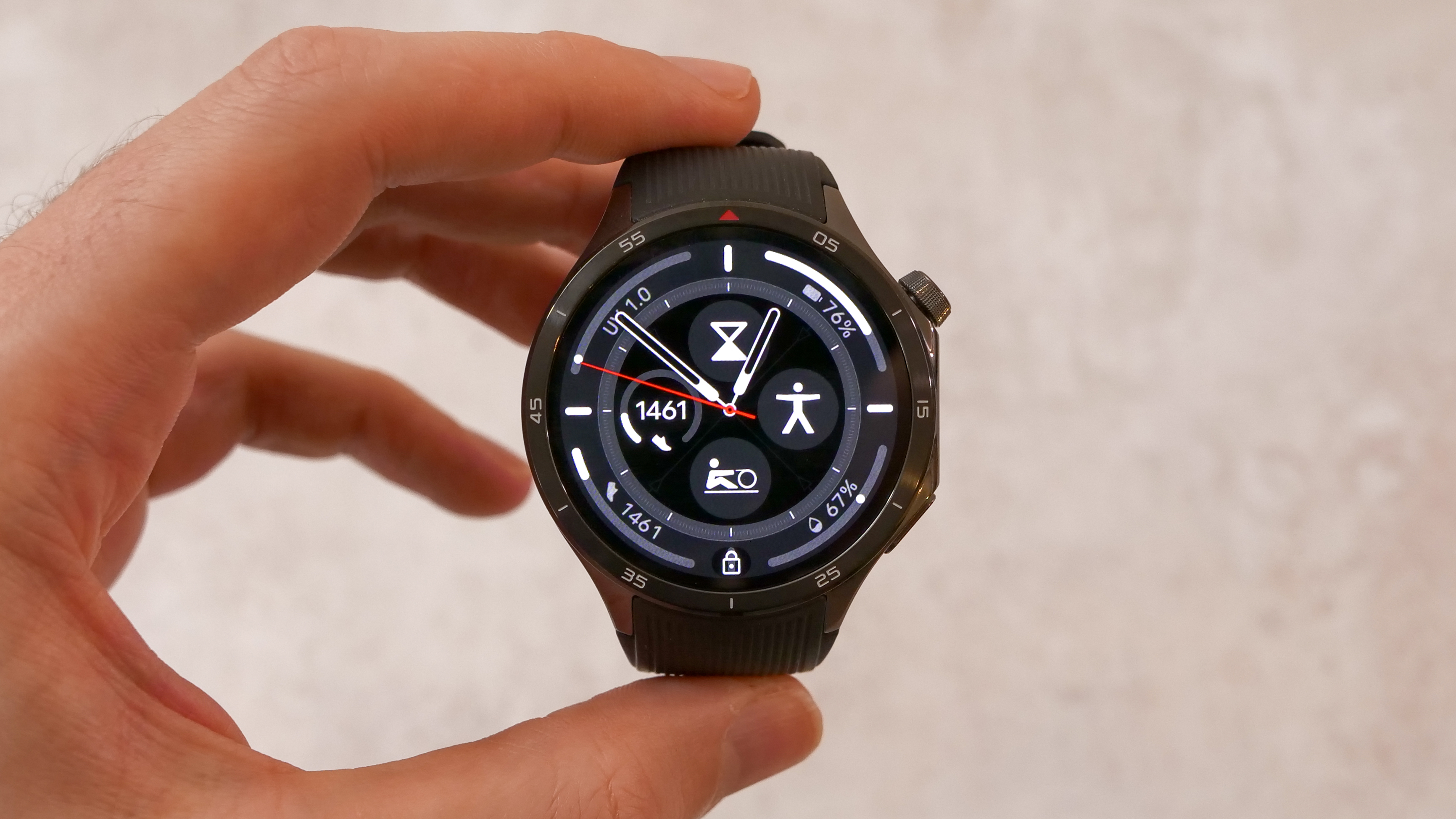 OnePlus Watch 3 lands in the UK with a flurry of freebies and a huge discount
OnePlus Watch 3 lands in the UK with a flurry of freebies and a huge discountThe new titanium-clad smartwatch brings 120-hour battery life, ECG health checks, and some serious launch offers
By Matt Kollat Published
-
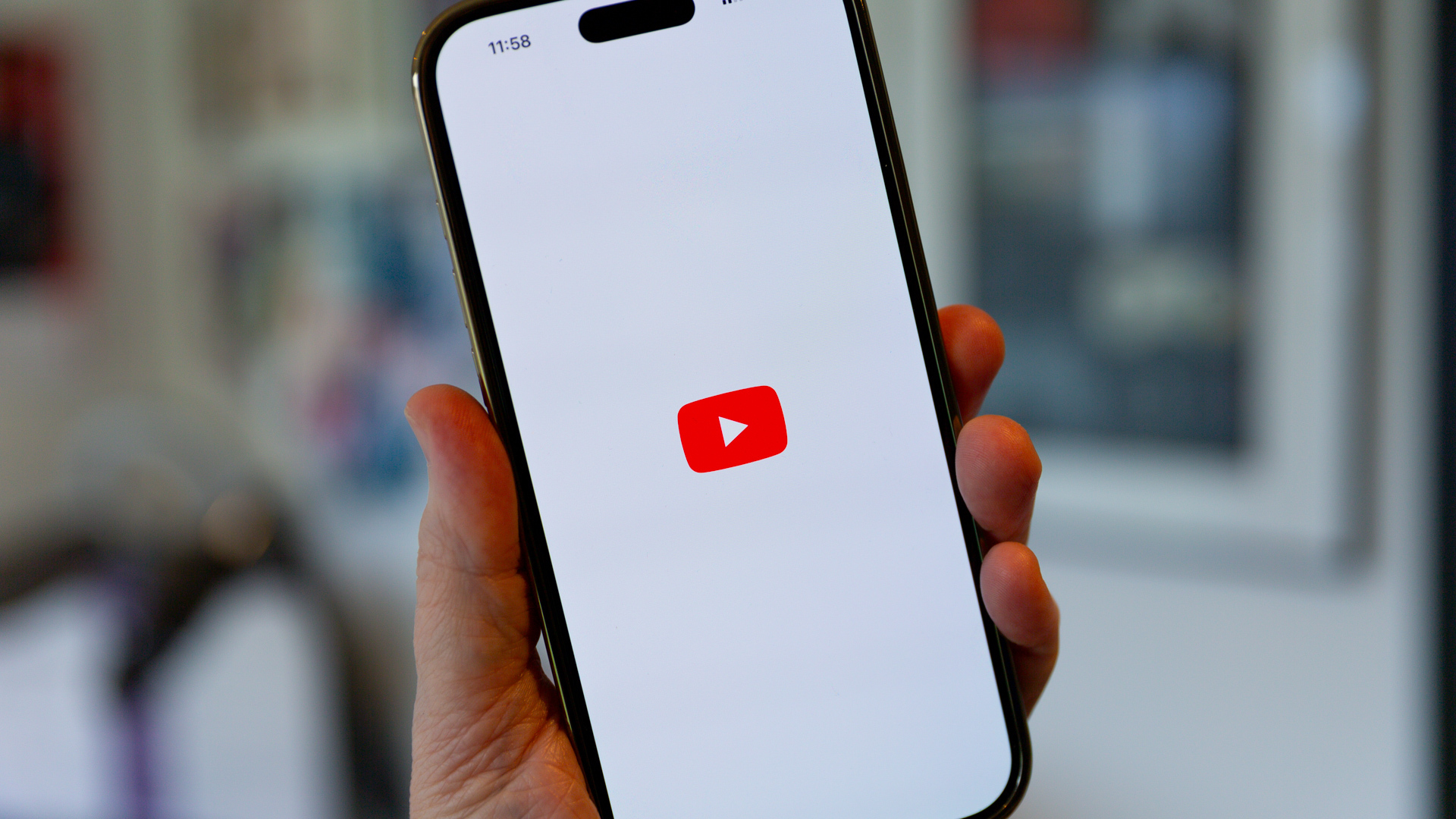 Future YouTube feature could put an end to your doomscrolling
Future YouTube feature could put an end to your doomscrollingAnd that's something we would love to see
By Britta O'Boyle Published